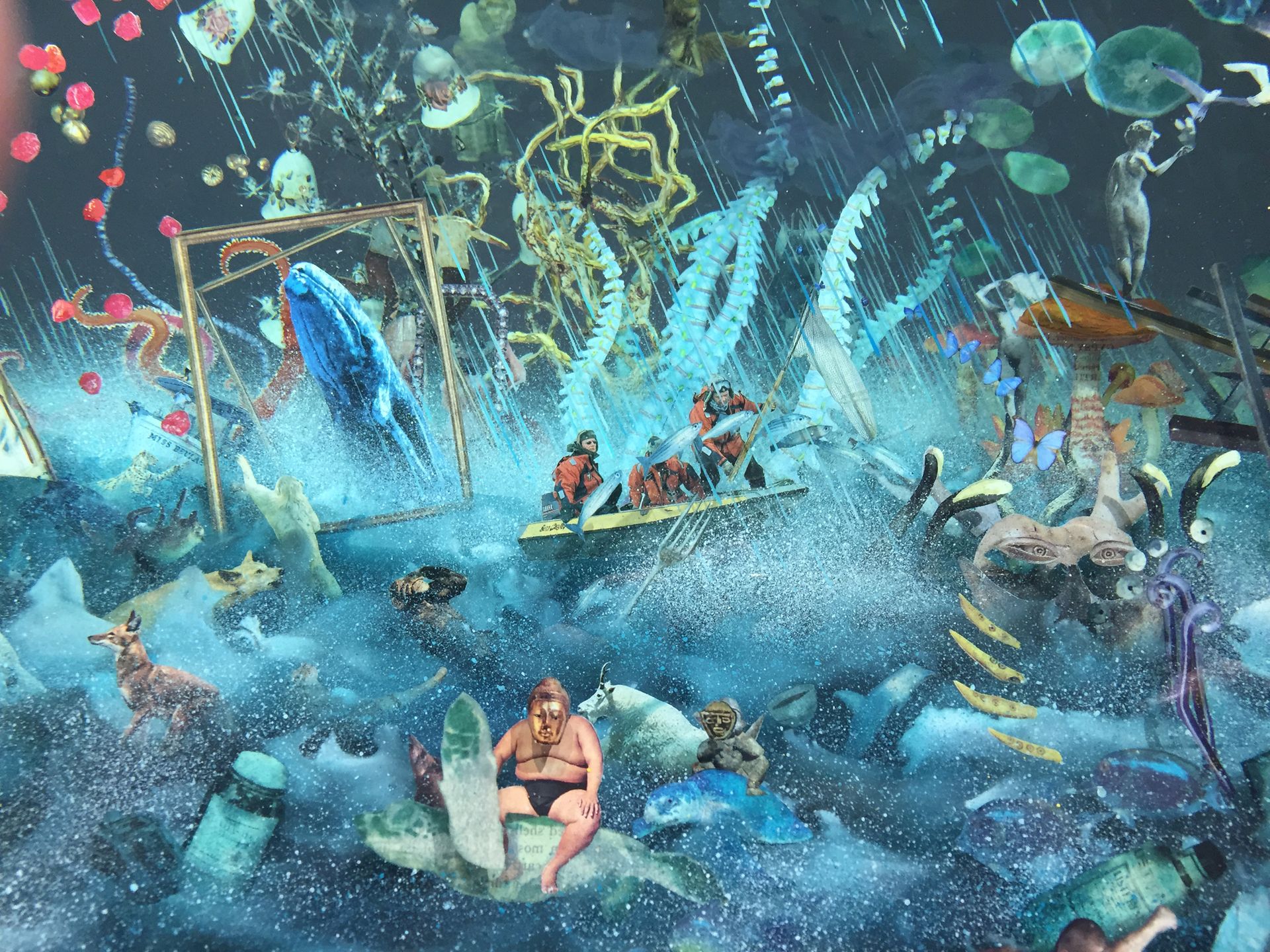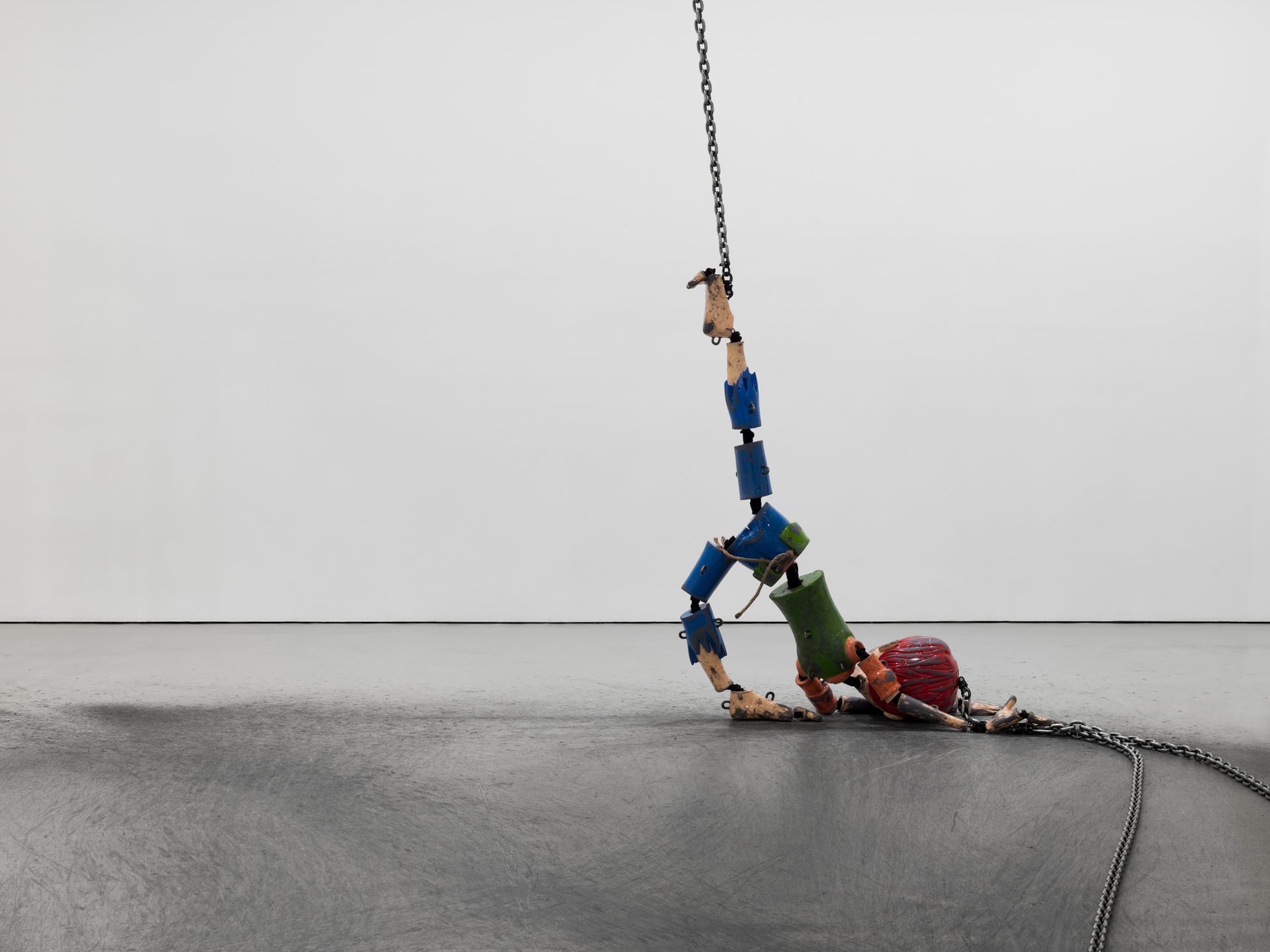An intricately-detailed ten-part vision of environmental disaster by the New York-based artist Dustin Yellin is on display for the first time at Grimm gallery in Amsterdam (until 7 January). The 20-ft work shows a tidal wave unleashed by melting ice caps sweeping away people, animals, art and buildings. The apocalyptic landscape consists of thousands of images cut out of magazines and collaged together in blocks made from multiple sheets of glass held together by invisible glue. Details have been painted on to the glass by Yellin who worked with some 20 assistants for 18 months to complete the complex installation.
The piece has been sold to a US collector, the gallery says, and is expected to go on a tour of Europe before heading to its new home. Its unveiling took place as part of Amsterdam Art Weekend, a four-day city-wide contemporary art initiative, which finished yesterday.

The event was set up in 2012 following the partial closure over several of the preceding years of both the Rijksmuseum and the Stedelijk Museum; the consequent decline in visitors to Amsterdam had a major effect on commercial galleries, says Adriana Gonzalez Hulshof, the director of Amsterdam Art Weekend.
So a group of private collectors and art dealers banded together to launch an annual weekend of openings and related programmes. The fifth, widely-expanded edition, included around 50 participating galleries, museums, academies and project spaces. The event is focussed on emerging artists to show that “Amsterdam is an incubator of young talent,” Hulshof says.
The cornerstone initiative is the annual public opening of the Rijksakademie, an art school which offers graduate residencies to Dutch and international artists. Over 45 artists invited visitors into their studios to see work they’d made over the past year. One standout work was the ambitious multimedia installation by the Japanese artist Takeshi Ikeda. Back home in Japan, Ikeda is in a punk band called core of bells; one of his videos shows him performing a series of “songs” consisting of statements shouted at the camera including a hilarious, rage-fuelled rant about the difficulties of making a career as an artist.
Self-doubt and the anxiety of young artists is also a theme of The Crisis, a 2004 video by the US rising star Jordan Wolfson whose solo exhibition at the Stedelijk Museum opened on Saturday as part of Amsterdam Art Weekend (Part 1: Manic Love is on until 29 January 2017; Part 2: Truth Love runs from 18 February 2017 to 23 April 2017.) In the piece, Wolfson wanders through a Medieval church, face to camera, wondering if he can ever make art as great as his predecessors and asking if he should give up altogether.

Other works on display in Wolfson's show include the artist’s Colored Sculpture, a computer-controlled puppet seen in May at David Zwirner in New York and in September at the LUMA foundation in Arles, France. The menacing Pinocchio meets Chucky figure dangles from heavy chains, dances through space, crashes to the floor and makes eye contact with visitors using facial recognition technology. The work tackles many contemporary concerns including our relationship with technology, visual culture, and our own bodies, said Beatrix Ruf, the director of the Stedelijk Museum, at the exhibition opening.
Other shows in the city include photographs of refugees and marble life buoy sculptures by Ai Weiwei at Foam Photography Museum (until 7 December); a multi-screen video installation by the Scottish artist Douglas Gordon at the National Holocaust Museum (until 19 February); shimmering tapestries made from recycled bottlecaps by the Ghanaian artist El Anatsui at the Prince Claus Fund Gallery (until 28 April), and much more besides.

